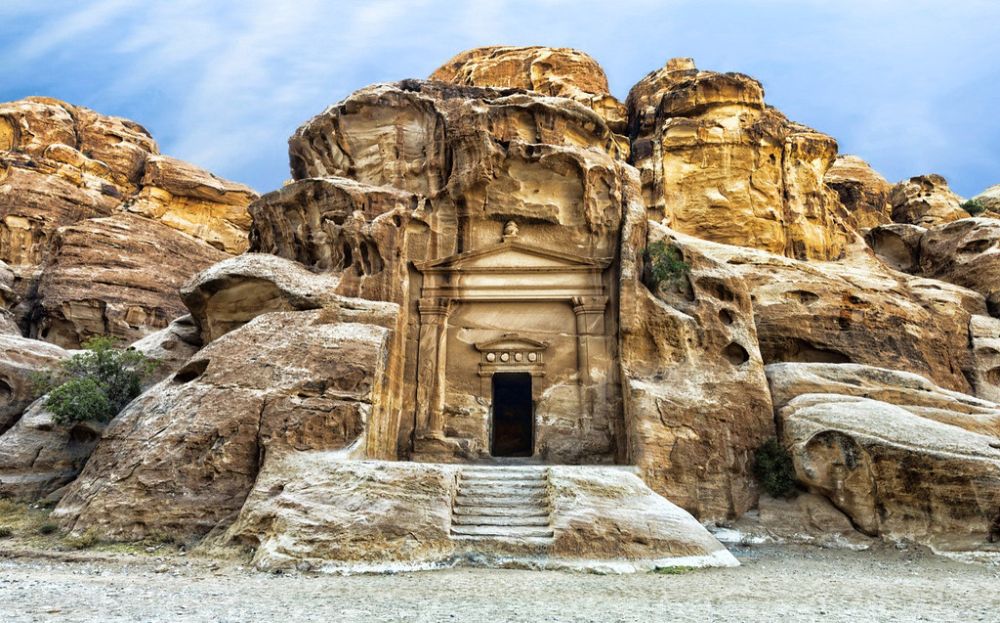

Little Petra, also known as Siq al-Barid, is an archaeological site located north of the main city of Petra, Jordan. Often overshadowed by the vastness and fame of its neighbor, Little Petra offers a more intimate glimpse into the Nabataean civilization, which thrived around the 1st century AD.
Little Petra served as an important suburb of Petra, functioning as a trading area where caravans could rest and resupply before entering the main city. It was thought to serve primarily as an agricultural hub, with evidence of complex water management systems used to support the nearby communities. The presence of dining halls and residential structures also suggests that Little Petra was a site of some social significance among the Nabataeans.
Tourism in Petra began in earnest in the early 20th century, but Little Petra remained relatively unknown until later on. As the breathtaking beauty and historical significance of Petra were recognized globally, with it being designated as a UNESCO World Heritage site in 1985, the nearby Siq al-Barid gradually stepped into the tourist limelight.
Visitors to Little Petra can wander through its narrow siq, or canyon, which opens up to reveal modest yet enchanting facades carved directly into the sandstone cliffs. While it features the same Nabataean architecture as the larger Petra, the scale and serenity of Little Petra provide a more personal experience away from the larger crowds.
In recent years, the tourism industry has begun to take note of the need for sustainable and responsible travel. Eco-tourism and cultural preservation have become key trends in the region, with various projects aimed at conserving the delicate environment of Little Petra and supporting the local Bedouin communities.
Furthermore, experiential travel has seen an uptake, with tourists looking for more than just sightseeing. Activities like overnight Bedouin experiences, traditional cooking classes, and archaeological tours add depth to the visit while offering a tangible connection to the region's rich heritage.
To accommodate the modern traveler, amenities and access to Little Petra have improved significantly, making it more visitor-friendly while maintaining its historic charm.
The government of Jordan and various international agencies are closely involved in the ongoing preservation and promotion of Little Petra. The future vision is to balance increasing visitor numbers with conservation efforts, ensuring that Little Petra continues to be a cherished destination for generations to come.
As part of this vision, infrastructure around Little Petra is being developed to better cater to the cultural and environmental tourism boom. With the rise of digital and social media, Little Petra’s visibility is higher than ever, inviting a global audience to explore its ancient pathways and rediscover history in the landscape of Jordan.
For those planning a visit, Little Petra is easily accessible from the town of Wadi Musa and provides a quieter counterpoint to the main attractions of Petra. It is an essential stop for any history enthusiast or traveler looking for an off-the-beaten-path adventure in the heart of the Nabataean world.